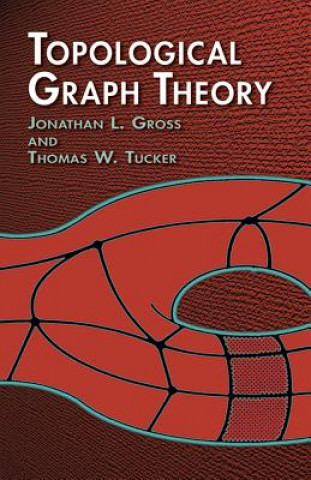
Kód: 02565597
Topological Graph Theory
Autor Gross & Tucker
1. Introduction 1.1 Representation of Graphs 1.1.1 Drawings 1.1.2 Incidence Matrix 1.1.3 Euler's theorem on valence sum 1.1.4 Adjacency Matrix 1.1.5 Directions 1.1.6 Graphs, maps, isomorphisms 1.1.7 Automorphisms 1 ... celý popis
- Jazyk:
 Angličtina
Angličtina - Väzba: Brožovaná
- Počet strán: 361
Nakladateľ: Dover Publications Inc., 2003
- Viac informácií o knihe

19.61 €
Bežne: 20.66 €
Ušetríte 1.05 €
Dostupnosť:
50 % šanca Máme informáciu, že by titul mohol byť dostupný. Na základe vašej objednávky sa ho pokúsime do 6 týždňov zabezpečiť.
Máme informáciu, že by titul mohol byť dostupný. Na základe vašej objednávky sa ho pokúsime do 6 týždňov zabezpečiť.Prehľadáme celý svet
Mohlo by sa vám tiež páčiť
-

LEGO Life Hacks
12.43 € -13 % -

Read with Oxford: Stages 2-3: Biff, Chip and Kipper: My Phonics Kit
14.25 € -23 % -

Harry Potter and the Chamber of Secrets - Ravenclaw Edition
19.51 € -4 % -

Mid-Century Modern Graphic Design
30.53 € -13 % -

Networks
98.78 € -

Classic Works from Women Writers
24.97 € -4 % -

Midnight Hour
7.88 € -22 % -

Lonely Planet Chicago
22.54 € -

Brand Portfolio Strategy
24.97 € -18 % -

Niggalations: The Lost book of Ghetto Philosophers: Inspirational quotes
15.97 € -

Terra Incognita
32.45 € -23 % -

STM32F103 Arm Microcontroller and Embedded Systems
29.21 € -

Bing: My Toilet Train Sticker Book
3.43 € -43 % -

All about Bluey
5.65 € -31 % -

Rota Mundi Tarot: The Rosicrucian Arcanum
31.24 € -12 % -

Why We're Polarized
12.12 € -23 % -

Mystery Colors: Christmas: Color by Number & Discover the Magic
12.83 € -

How To Be A Games User Researcher
25.06 € -

Bees, Birds & Butterflies Sticker Anthology
24.16 € -

30 and 1 Indian Mantras for Tongue Drum and Handpan
15.97 € -

Sonic The Hedgehog: The IDW Collection, Vol. 2
51.05 € -15 % -

Subtle Art of Not Giving a F*ck Journal
15.36 € -20 % -

Perfect Day to Boss Up
14.25 € -23 % -

Radiant Black, Volume 3: A Massive-Verse Book
15.06 € -17 % -

Bungo Stray Dogs: Another Story, Vol. 2
11.92 € -15 % -

Imogen, Obviously
18.39 € -13 % -

Avatar The Way of Water The Visual Dictionary
30.02 € -14 % -

Girl, Goddess, Queen
16.37 € -23 % -

Marie Laurencin – Sapphic Paris
49.64 € -1 % -

Saving 6
13.74 € -12 % -

Star Wars: Episode III: Revenge of the Sith
12.12 € -23 % -

Pocket Atlas of Remote Islands
23.85 € -23 % -

Burning Bridge
9.39 € -17 % -

Transport Nodal System
126.89 € -

Healing Scripts
47.82 € -

Dragon Ball Z, Vol. 14
8.79 € -22 % -

The Art of Spirited Away
31.34 € -12 % -

How to Read a Book
14.05 € -11 % -

Languages of the World
83.31 € -

The Concise Art of Seduction
11.01 € -23 % -

Edward's Crochet Imaginarium
21.73 € -23 % -

The Oxygen Advantage
16.37 € -23 % -

Curious George Haunted Halloween
6.06 € -7 % -

Sketching Product Design Presentation
37.91 € -17 % -

Galgo Espanol
33.46 € -

Guess How Much I Love You
7.88 € -22 % -

Test Your English Vocabulary in Use Upper-intermediate Book with Answers
23.75 € -

Refactoring
53.79 € -4 % -

Inception
17.48 € -

Orlando
8.89 € -23 % -

Art of Tatting Jewelry, The
16.98 € -19 % -

George Elton Mayo
834.83 € -

Romantic Poets
13.64 € -16 % -

TNM Classification of Malignant Tumours 8e
51.66 € -3 % -

Testuj Swoj Polski: Gramatyka 1: Test Your Polish: Grammar 1
9.80 € -4 % -

Tell-tale Brain
15.36 € -19 % -

MAYA BLUE
32.25 € -

Vauxhall/Opel Vectra Petrol & Diesel Service And R
36.19 € -10 % -

Mit Erfolg zum Goethe-Zertifikat C1 - Ubungsbuch
23.85 € -7 % -

Krimi-Advent mit Sherlock Holmes, Zettelkalender
16.57 € -

Ciekawski George w wielkim mieście
3.43 € -4 % -

Spektrum Deutsch B2: Teilband 1
18.49 € -

Macarons
9.80 € -31 %
Darujte túto knihu ešte dnes
- Objednajte knihu a vyberte Zaslať ako darček.
- Obratom obdržíte darovací poukaz na knihu, ktorý môžete ihneď odovzdať obdarovanému.
- Knihu zašleme na adresu obdarovaného, o nič sa nestaráte.
Informovať o naskladnení knihy
Zadajte do formulára e-mailovú adresu a akonáhle knihu naskladníme, zašleme vám o tom správu. Postrážime všetko za vás.
Viac informácií o knihe Topological Graph Theory
Nákupom získate 49 bodov
 Anotácia knihy
Anotácia knihy
1. Introduction 1.1 Representation of Graphs 1.1.1 Drawings 1.1.2 Incidence Matrix 1.1.3 Euler's theorem on valence sum 1.1.4 Adjacency Matrix 1.1.5 Directions 1.1.6 Graphs, maps, isomorphisms 1.1.7 Automorphisms 1.1.8 Exercises 1.2 Some important classes of graphs 1.2.1 Walks, paths, and cycles; connectedness 1.2.2 Trees 1.2.3 Complete graphs 1.2.4 Cayley graphs 1.2.5 Bipartite graphs 1.2.6 Bouquets of Circles 1.2.7 Exercises 1.3 New graphs from old 1.3.1 Subgraphs 1.3.2 Topological representations, subdivisions, graph homeomorphisms 1.3.3 Cartesian products 1.3.4 Edge-complements 1.3.5 Suspensions 1.3.6 Amalgamations 1.3.7 Regular quotients 1.3.8 Regular coverings 1.3.9 Exercises 1.4 Surfaces and imbeddings 1.4.1 Orientable surfaces 1.4.2 Nonorientable surfaces 1.4.3 Imbeddings 1.4.4 Euler's equation for the sphere 1.4.5 Kuratowski's graphs 1.4.6 Genus of surfaces and graphs 1.4.7 The torus 1.4.8 Duality 1.4.9 Exercises 1.5 More graph-theoretic background 1.5.1 Traversability 1.5.2 Factors 1.5.3 Distance, neighborhoods 1.5.4 Graphs colorings and map colorings 1.5.5 Edge operations 1.5.6 Algorithms 1.5.7 Connectivity 1.5.8 Exercises 1.6 Planarity 1.6.1 A nearly complete sketch of the proof 1.6.2 Connectivity and region boundaries 1.6.3 Edge contraction and connectivity 1.6.4 Planarity theorems for 3-connected graphs 1.6.5 Graphs that are not 3-connected 1.6.6 Algorithms 1.6.7 Kuratowski graphs for higher genus 1.6.8 Other planarity criteria 1.6.9 Exercises 2. Voltage Graphs and Covering Spaces 2.1 Ordinary voltages 2.1.1 Drawings of voltage graphs 2.1.2 Fibers and the natural projection 2.1.3 The net voltage on a walk 2.1.4 Unique walk lifting 2.1.5 Preimages of cycles 2.1.6 Exercises 2.2 Which graphs are derivable with ordinary voltages? 2.2.1 The natural action of the voltage group 2.2.2 Fixed-point free automorphisms 2.2.3 Cayley graphs revisited 2.2.4 Automorphism groups of graphs 2.2.5 Exercises 2.3 Irregular covering graphs 2.3.1 Schreier graphs 2.3.2 Relative voltages 2.3.3 Combinatorial coverings 2.3.4 Most regular graphs are Schreier graphs 2.3.5 Exercises 2.4 Permutation voltage graphs 2.4.1 Constructing covering spaces with permutations 2.4.2 Preimages of walks and cycles 2.4.3 Which graphs are derivable by permutation voltages? 2.4.4 Identifying relative voltages with permutation voltages 2.4.5 Exercises 2.5 Subgroups of the voltage group 2.5.1 The fundamental semigroup of closed walks 2.5.2 Counting components of ordinary derived graphs 2.5.3 The fundamental group of a graph 2.5.4 Contracting derived graphs onto Cayley graphs 2.5.5 Exercises 3. Surfaces and Graph Imbeddings 3.1 Surfaces and simplicial complexes 3.1.1 Geometric simplicial complexes 3.1.2 Abstract simplicial complexes 3.1.3 Triangulations 3.1.4 Cellular imbeddings 3.1.5 Representing surfaces by polygons 3.1.6 Pseudosurfaces and block designs 3.1.7 Orientations 3.1.8 Stars, links, and local properties 3.1.9 Exercises 3.2 Band Decompositions and graph imbeddings 3.2.1 Band decomposition for surfaces 3.2.2 Orientability 3.2.3 Rotation systems 3.2.4 Pure rotation systems and orientable surfaces 3.2.5 Drawings of rotation systems 3.2.6 Tracing faces 3.2.7 Duality 3.2.8 Which 2-complexes are planar? 3.2.9 Exercises 3.3 The classification of surfaces 3.3.1 Euler characteristic relative to an imbedded graph 3.3.2 Invariance of Euler characteristic 3.3.3 Edge-deletion surgery and edge sliding 3.3.4 Completeness of the set of orientable models 3.3.5 Completeness of the set of nonorientable models 3.3.6 Exercises 3.4 The imbedding distribution of a graph 3.4.1 The absence of gaps in the genus range 3.4.2 The absence of gaps in the crosscap range 3.4.3 A genus-related upper bound on the crosscap number 3.4.4 The genus and crosscap number of the complete graph K subscript 7 3.4.5 Some graphs of crosscap number 1 but arbitrarily large genus 3.4.6 Maximum genus 3.4.7 Distribution of genus and face sizes 3.4.8 Exercises 3.5 Algorithms and formulas for minimum imbeddings 3.5.1 Rotation-system algorithms 3.5.2 Genus of an amalgamation 3.5.3 Crosscap number of an amalgamation 3.5.4 The White-Pisanski imbedding of a cartesian product 3.5.5 Genus and crosscap number of cartesian products 3.5.6 Exercises 4. Imbedded voltage graphs and current graphs 4.1 The derived imbedding 4.1.1 Lifting rotation systems 4.1.2 Lifting faces 4.1.3 The Kirchhoff Voltage Law 4.1.4 Imbedded permutation voltage graphs 4.1.5 Orientability 4.1.6 An orientability test for derived surfaces 4.1.7 Exercises 4.2 Branched coverings of surfaces 4.2.1 Riemann surfaces 4.2.2 Extension of the natural covering projection 4.2.3 Which branch coverings come from voltage graphs? 4.2.4 The Riemann-Hurwitz equation 4.2.5 Alexander's theorem 4.2.6 Exercises 4.3 Regular branched coverings and group actions 4.3.1 Groups acting on surfaces 4.3.2 Graph automorphisms and rotation systems 4.3.3 Regular branched coverings and ordinary imbedded voltage graphs 4.3.4 Which regular branched coverings come from voltage graphs? 4.3.5 Applications to group actions on the surface S subscript 2 4.3.6 Exercises 4.4 Current graphs 4.4.1 Ringel's generating rows for Heffter's schemes 4.4.2 Gustin's combinatorial current graphs 4.4.3 Orientable topological current graphs 4.4.4 Faces of the derived graph 4.4.5 Nonorientable current graphs 4.4.6 Exercises 4.5 Voltage-current duality 4.5.1 Dual directions 4.5.2 The voltage graph dual to a current graph 4.5.3 The dual derived graph 4.5.4 The genus of the complete bipartite graph K (subscript m, n) 4.5.5 Exercises 5. Map colorings 5.1 The Heawood upper bound 5.1.1 Average valence 5.1.2 Chromatically critical graphs 5.1.3 The five-color theorem 5.1.4 The complete-graph imbedding problem 5.1.5 Triangulations of surfaces by complete graphs 5.1.6 Exercises 5.2 Quotients of complete-graph imbeddings and some variations 5.2.1 A base imbedding for orientable case 7 5.2.2 Using a coil to assign voltages 5.2.3 A current-graph perspective on case 7 5.2.4 Orientable case 4: doubling 1-factors 5.2.5 About orientable cases 3 and 0 5.2.6 Exercises 5.3 The regular nonorientable cases 5.3.1 Some additional tactics 5.3.2 Nonorientable current graphs 5.3.3 Nonorientable cases 3 and 7 5.3.4 Nonorientable case 0 5.3.5 Nonorientable case 4 5.3.6 About nonorientable cases 1, 6, 9, and 10 5.3.7 Exercises 5.4 Additional adjacencis for irregular cases 5.4.1 Orientable case 5 5.4.2 Orie 6.1.1 Recovering a Cayley graph from any of its quotients 6.1.2 A lower bound for the genus of most abelian groups 6.1.3 Constructing quadrilateral imbeddings for most abelian groups 6.1.4 Exercises 6.2 The symmetric genus 6.2.1 Rotation systems and symmetry 6.2.2 Reflections 6.2.3 Quotient group actions on quotient surfaces 6.2.4 Alternative Cayley graphs revisited 6.2.5 Group actions and imbeddings 6.2.6 Are genus and symmetric genus the same? 6.2.7 Euclidean space groups and the torus 6.2.8 Triangle groups 6.2.9 Exercises 6.3 Groups of small symmetric genus 6.3.1 The Riemann-Hurwitz equation revisited 6.3.2 Strong symmetric genus 0 6.3.3 Symmetric genus 1 6.3.4 The geometry and algebra of groups of symmetric genus 1 6.3.5 Hurwitz's theorem 6.3.6 Exercises 6.4 Groups of small genus 6.4.1 An example 6.4.2 A face-size inequality 6.4.3 Statement of main theorem 6.4.4 Proof of theorem 6.4.2: valence d = 4 6.4.5 Proof of theorem 6.4.2: valence d = 3 6.4.6 Remarks about Theorem 6.4.2 6.4.7 Exercises References Bibliography Supplementary Bibliography Table of Notations Subject Index
 Parametre knihy
Parametre knihy
Zaradenie knihy Knihy po anglicky Mathematics & science Mathematics
19.61 €
- Celý názov: Topological Graph Theory
- Autor: Gross & Tucker
- Jazyk:
 Angličtina
Angličtina - Väzba: Brožovaná
- Počet strán: 361
- EAN: 9780486417417
- ISBN: 0486417417
- ID: 02565597
- Nakladateľ: Dover Publications Inc.
- Hmotnosť: 408 g
- Rozmery: 142 × 216 × 23 mm
- Dátum vydania: 28. March 2003
Obľúbené z iného súdka
-

Trachtenberg Speed System of Basic Mathematics
13.74 € -12 % -

Lectures in Set Theory
51.36 € -
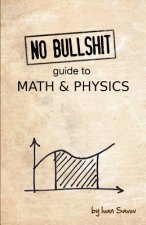
No Bullshit Guide to Math and Physics
27.29 € -19 % -

Math Art
22.14 € -21 % -

Basic Mathematics
58.03 € -7 % -

Love and Math
16.78 € -20 % -

Mathematics: A Very Short Introduction
10 € -23 % -

Effective Data Storytelling - How to Drive Change with Data, Narrative and Visuals
34.37 € -19 % -

Microsoft Power BI For Dummies
29.92 € -21 % -

Vedic Mathematics
18.60 € -
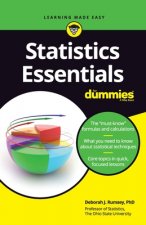
Statistics Essentials For Dummies
10.91 € -2 % -
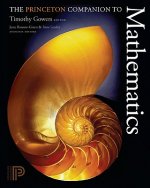
Princeton Companion to Mathematics
103.23 € -11 % -

Calculus For The Practical Man
46.81 € -

Algebra I Essentials For Dummies
14.65 € -

William Lowell Putnam Mathematical Competition 1985-2000
83.41 € -

Schaum's Outline of Geometry, Sixth Edition
17.48 € -23 % -

Schaum's Outline of Mathematical Handbook of Formulas and Tables, Fifth Edition
16.37 € -23 % -

Mathematics in the 21st Century
137.81 € -

Kendalls Advanced Theory of Statistics 6e 3VST
489.91 € -

Pearson Edexcel International A Level Mathematics Pure 2 Mathematics Student Book
38.31 € -

ISE Discrete Mathematics and Its Applications
76.64 € -

Mathematics Analysis and Approaches for the IB Diploma Standard Level
101.82 € -

Mathematics for the Non-mathematician
34.17 € -4 % -

Change Is the Only Constant
28.10 € -3 % -

Fashion, Faith, and Fantasy in the New Physics of the Universe
18.19 € -8 % -

Mathematics
48.73 € -19 % -

Big Data in Practice (use cases) - How 45 Successful Companies Used Big Data Analytics to Deliver Extraordinary Results
40.03 € -20 % -
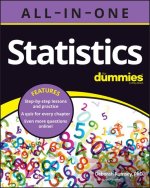
Statistics All-in-One For Dummies (+ Chapter Quizzes Online)
27.60 € -30 % -

Calculus Essentials For Dummies
12.73 € -11 % -

Sciencia
27.39 € -4 % -

Practical Algebra: A Self-Teaching Guide, Third Ed ition
20.62 € -21 % -

Street-Fighting Mathematics
44.58 € -
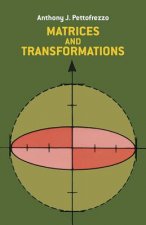
Matrices and Transformations
8.99 € -19 % -

Proof and the Art of Mathematics
43.07 € -
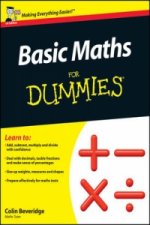
Basic Maths For Dummies
19 € -29 % -

Calculus For The Practical Man
60.56 € -

SQL for Data Scientists - A Beginner's Guide for Building Datasets for Analysis
40.03 € -20 % -

Applied Functional Analysis
24.76 € -4 % -
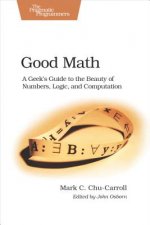
Good Math
32.85 € -5 % -

Chebyshev Polynomials: From Approximation Theory to Algebra and Number Theory
20.11 € -23 % -
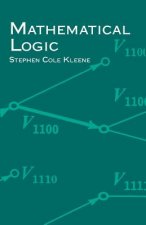
Mathematical Logic
20.92 € -19 % -

Pearson Edexcel GCSE (9-1) Mathematics Foundation Student Book 1
22.64 € -

Taxes For Dummies 2022 Edition
29.92 € -

Playing with Infinity
14.96 € -5 % -

Pearson Edexcel GCSE (9-1) Mathematics Foundation Student Book 2
22.64 € -

Cambridge International AS & A Level Mathematics Pure Mathematics 1 Student's Book
30.33 € -2 % -

Mathematics for the IB Diploma: Higher Level with CD-ROM
88.87 € -

Mathematics Analysis and Approaches for the IB Diploma Higher Level
85.03 € -

Mathematics for the IB Diploma Standard Level with CD-ROM
84.83 €
Osobný odber Bratislava a 2642 dalších
Copyright ©2008-24 najlacnejsie-knihy.sk Všetky práva vyhradenéSúkromieCookies


 21 miliónov titulov
21 miliónov titulov Vrátenie do mesiaca
Vrátenie do mesiaca 02/210 210 99 (8-15.30h)
02/210 210 99 (8-15.30h)